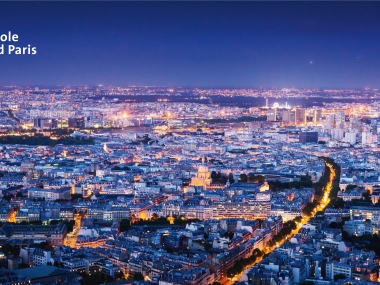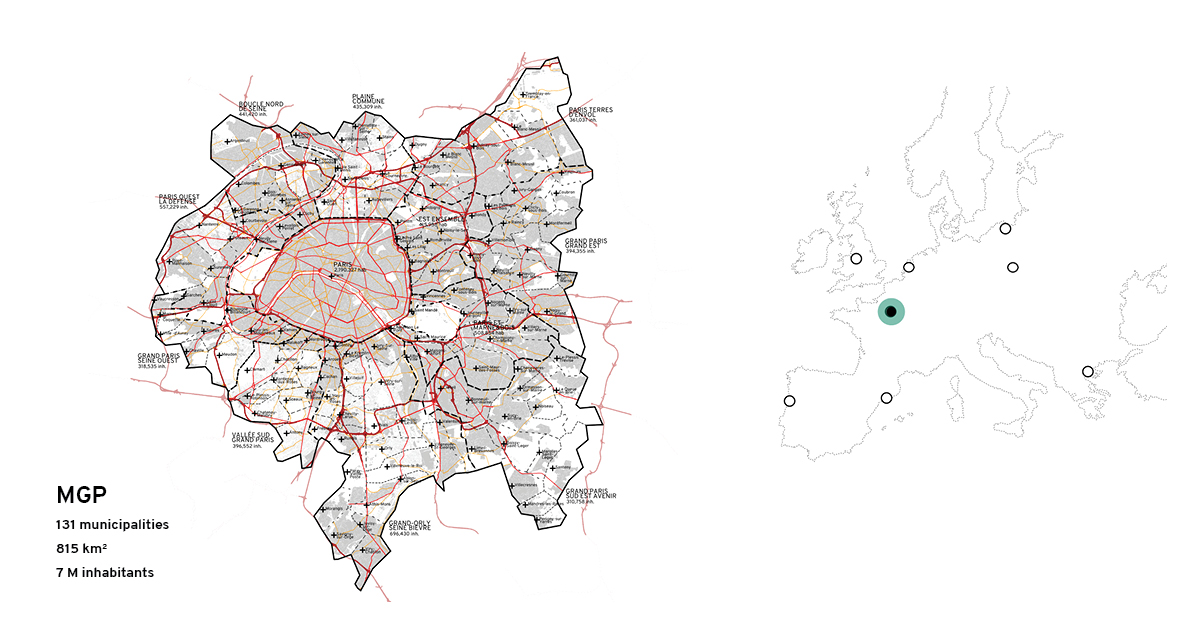Métropole du Grand Paris
Edited on
09 June 2022Get to know the Greater Paris Metropolis: one of the largest metropolises in Europe, with 7.2 million inhabitants. The institution is working to set a strategic path for the future in topics such as climate change, while also investing in the transformation of mobility infrastructures as it happens in RiConnect.

The Greater Paris Metropolis is a dense and urban inter-municipal establishment that unites a total of 131 cities, including Paris. It spreads over a total of 814 km² and hosts a total population of 7.2 million inhabitants, 30% of which concentrate in the city of Paris and the remaining 70% distribute among the other 130 municipalities.

As an institution, the Greater Paris Metropolis was officially created on January 1st 2016, as a result of the approval of the MAPTAM law in 2014 (modernisation de l'action publique territoriale et d'affirmation des métropoles), which granted it, together with other French metropolises, of a new legal status.
Greater Paris Metropolis’s governance stems from its different organs, namely the Metropolitan Council, its main governing body, which is made up of 208 metropolitan councilors representing the 131 municipalities that are part of the metropolitan area. The Metropolitan Bureau, elected by the Metropolitan Council and led by the metropolis’s president, is in charge of establishing the organization’s political strategy, examines the agenda and the draft deliberations to be submitted to vote to the Metropolitan Council.
The Greater Paris Metropolis currently holds competences in five main areas: energy policy and climate change action, management of aquatic environment and flood prevention, land use planning, economic, social and cultural development and Planning, and local housing policy. It is responsible for the definition of strategic documents such as the Metropolitan Climate Air Energy Plan, the Metropolitan Digital Development Plan, the Plan for Noise Prevention and the Territorial Cohesion Plan. The latter, whose elaboration is in progress, sets 12 main ambitions :
- Consolidating a polycentric, space-saving metropolis that is balanced in the distribution of its functions
- Revealing the metropolis’s landscapes, reinforcing the presence of nature and agriculture in the city in order to foster the development of biodiversity by restoring ecological continuities such as green and blue corridors, to enable water retention and to cool down urban blocks
- Enabling low-income neighborhoods to regain a positive development dynamic
- Relying on new technologies and future industries to accelerate economic development, job creation and the ecological transition
- Enhancing the cultural and heritage peculiarity of the Greater Paris region for the benefit of its inhabitants and its influence in the world
- Offering a residential path for all metropolitan residents
- Acting to improve air quality, transforming modes of transportation, and making public space peaceful
- Strengthening accessibility to all places by public transport and creating links between territories
- Confirming the place of the Metropolis as the leading source of wealth in France by strengthening productive functions and economic diversity
- Organizing the energy transition
- Controlling risks and fighting against environmental degradation
Through the metropolitan Climate Air Energy Plan, the Greater Paris Metropolis wants to attain carbon neutrality in 2050 and to ensure World Health Organization’s air quality standards. To achieve these two goals, the Greater Paris Metropolis implemented a zero-emission zone in the core of the metropolitan area to encourage individuals to use cleaner vehicles. 79 municipalities will be forbidden to most polluting vehicles and households can benefit a grant to replace their cars, depending on their economic resources. The Greater Paris Metropolis is also starting the elaboration of a Metropolitan plan so as to develop cycling infrastructures.
Furthermore, the Greater Paris Metropolis is willing to foster the transformation of road infrastructures located within its boundaries and to accompany the regeneration of surrounding neighborhoods by the means of urban development and facilities projects. For instance, the Poudrerie-Hochailles metropolitan project, which is part of the RiConnect network, aims at connecting both sides of a national road, to give more space for active mobilities and to promote the use of public transport. The Metropolis also supports financially facilities which contribute to reduce urban barriers, such as transport infrastructures, thanks to a dedicated fund.
Being part of the RiConnect Project is a great opportunity to exchange ideas with European metropolitan authorities about the integration and the transformation of mobility infrastructures and to learn about new tools and methods in order to favor citizen participation.
Cover image: Métropole du Grand Paris
 Submitted by Mikel Berra-Sandín on
Submitted by Mikel Berra-Sandín on

